Recombinant Human BOLA1 protein(Met1-Pro137), His-tagged
| Cat.No. : | BOLA1-230H |
| Product Overview : | Recombinant Human BOLA1 (Q9Y3E2) (Met1-Pro137) was expressed in E. coli with a polyhistidine tag at the N-terminus. |
- Specification
- Gene Information
- Related Products
- Case Study
- Application
- Download
| Species : | Human |
| Source : | E.coli |
| Tag : | His |
| Protein Length : | Met1-Pro137 |
| Form : | Lyophilized from sterile PBS, pH 7.4. Normally 5 % - 8 % trehalose, mannitol and 0.01% Tween80 are added as protectants before lyophilization. |
| Molecular Mass : | The recombinant human BOLA1 consists of 153 amino acids and predicts a molecular mass of 16.4 KDa. It migrates as an approximately 10 KDa band in SDS-PAGE under reducing conditions. |
| Purity : | > 90 % as determined by SDS-PAGE |
| Storage : | Samples are stable for up to twelve months from date of receipt at -20°C to -80°C. Store it under sterile conditions at -20°C to -80°C. It is recommended that the protein be aliquoted for optimal storage. Avoid repeated freeze-thaw cycles. |
| Reconstitution : | It is recommended that sterile water be added to the vial to prepare a stock solution of 0.2 ug/ul. Centrifuge the vial at 4°C before opening to recover the entire contents. |
| Gene Name | BOLA1 bolA homolog 1 (E. coli) [ Homo sapiens ] |
| Official Symbol | BOLA1 |
| Synonyms | BOLA1; bolA homolog 1 (E. coli); bolA like 1 (E. coli); bolA-like protein 1; CGI 143; bolA-like 1; hBolA; CGI-143; MGC75015; RP11-196G18.18; |
| Gene ID | 51027 |
| mRNA Refseq | NM_016074 |
| Protein Refseq | NP_057158 |
| MIM | 613181 |
| UniProt ID | Q9Y3E2 |
| ◆ Recombinant Proteins | ||
| BOLA1-3763HF | Recombinant Full Length Human BOLA1 Protein, GST-tagged | +Inquiry |
| BOLA1-2794H | Recombinant Human BOLA1 Protein, MYC/DDK-tagged | +Inquiry |
| BOLA1-7129H | Recombinant Human BOLA1, His-tagged | +Inquiry |
| BOLA1-10267H | Recombinant Human BOLA1, His-tagged | +Inquiry |
| Bola1-1881M | Recombinant Mouse Bola1 Protein, Myc/DDK-tagged | +Inquiry |
| ◆ Cell & Tissue Lysates | ||
| BOLA1-173HCL | Recombinant Human BOLA1 cell lysate | +Inquiry |
Case 1: Willems P, et al. Antioxid Redox Signal. 2013
The BolA protein family is found widely in both eukaryotes and bacteria. In E. coli, BolA can make cells spherical and is more active during oxidative stress. This study looks into what the human version, BOLA1, does, particularly in how it impacts mitochondria's shape and redox balance. We discovered that BOLA1 works within the mitochondria to counter the effects of GSH depletion caused by BSO on mitochondrial redox potential. When BOLA1 is overexpressed, it negates the changes BSO and S-nitrosocysteine cause in mitochondrial shape. However, reducing BOLA1 levels leads to more oxidation of mitochondrial thiols. BOLA1's presence only in aerobic eukaryotes hints at its role in handling redox potential. Though BOLA1 interacts with mitochondrial glutaredoxin GLRX5, it remains unclear if GLRX5 directly influences BOLA1's function.
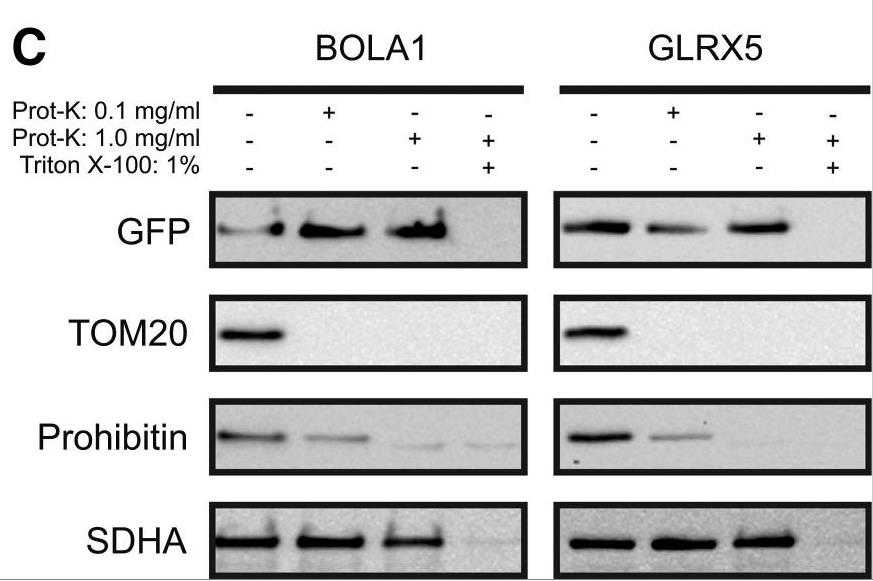
Fig1. Mitochondria-associated BOLA1-GFP and GLRX5-GFP are proteinase K-resistant.
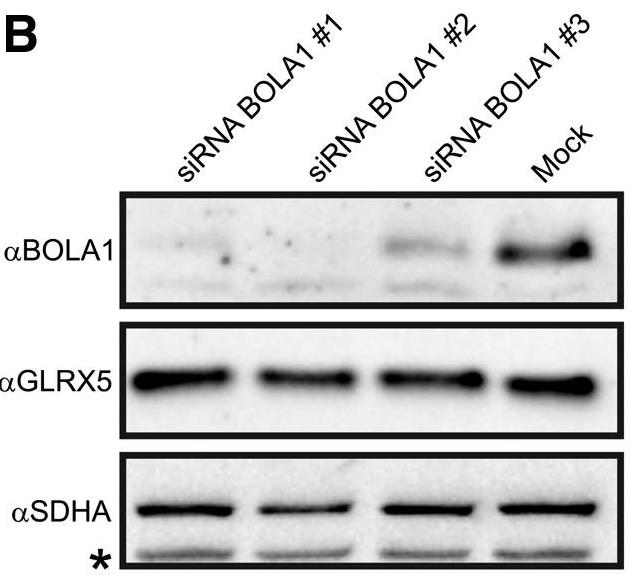
Fig2. BOLA1 knockdown is without effect on GLRX5 expression.
Case 2: Zhong H, et al. Nucleic Acids Res. 2023
The human mitochondrial ribosome features three [2Fe-2S] clusters, crucial for its structural integrity during assembly. We've found that these clusters are supplied by the GLRX5-BOLA3 pathway. Moreover, assembling the ribosome's small subunit requires METTL17, a mitoribosome biogenesis factor with its own [4Fe-4S] cluster, inserted via the ISCA1-NFU1 pathway. In cells from individuals with 'multiple mitochondrial dysfunction' syndrome due to BOLA3 or NFU1 mutations, a noticeable decrease in mitochondrial protein synthesis contributes to disease symptoms. Interestingly, beyond structural support, one of the [2Fe-2S] clusters and the [4Fe-4S] cluster in METTL17 respond to redox changes, potentially adjusting organellar protein production as needed.
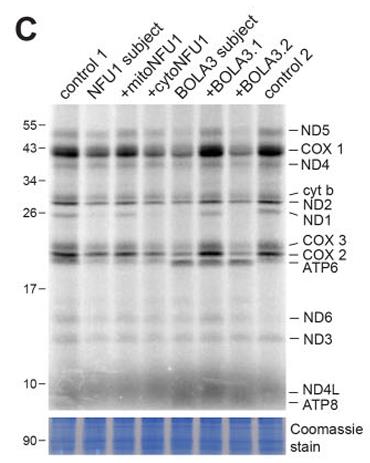
Fig1. Impaired mitochondrial protein synthesis in NFU1 and BOLA3 subject fibroblasts.
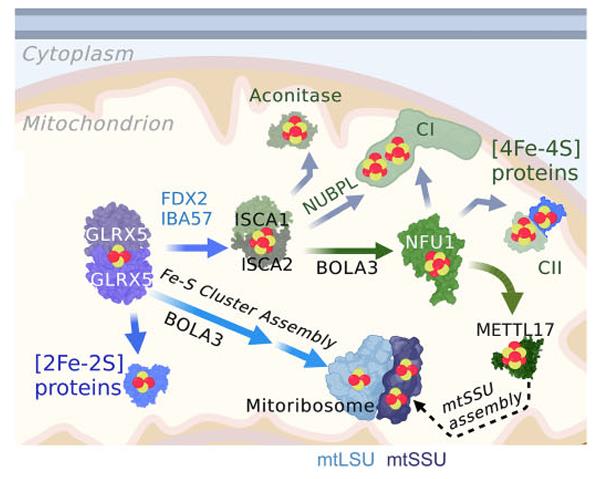
Fig2. GLRX5-BOLA3 pathway involved in [2Fe–2S] cluster delivery to the mitoribosome.
Human BOLA1, or BolA-like protein 1, is critical for forming mitochondrial iron-sulfur clusters and ensuring they fit into certain mitochondrial proteins, which is essential for both cellular respiration and battling oxidative stress.
In research, scientists often use recombinant Human BOLA1 (rhBOLA1) to delve into how it affects mitochondrial functions and how iron-sulfur clusters are made. They also examine its role in how cells respond to oxidative stress, aiming to understand its importance in keeping cells balanced. Additionally, rhBOLA1 is used in different tests to explore its interactions with other proteins and its effects on mitochondrial activities, especially its cooperation with monothiol glutaredoxin GLRX5.
On the industrial side, rhBOLA1 is produced mainly for drug discovery and development, focusing on treatments for mitochondrial diseases and oxidative stress-related issues. Made in E. coli and equipped with a His tag for easy purification, this recombinant protein is key in developing new therapies and researching mitochondrial functions and related diseases. Its production also aids in creating standardized research reagents, ensuring consistent and trustworthy scientific findings.
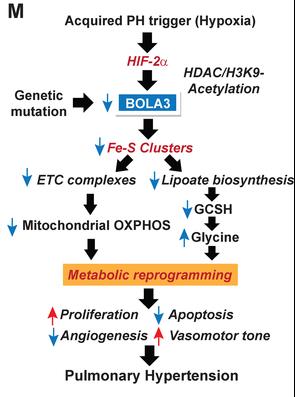
Fig1. Model of BOLA3 deficiency in PH. (Qiujun Yu, 2019)
Not For Human Consumption!
Inquiry
- Reviews
- Q&As
Ask a Question for All BOLA1 Products
Required fields are marked with *
My Review for All BOLA1 Products
Required fields are marked with *
Inquiry Basket


